
Deer are raised for their meat and skin, which is used to make leather products such as shoes, handbags, and belts. The American alligator is a regulated species in the United States, and alligator farming is strictly controlled by the government to ensure sustainable populations. Alligator farms are common in southern states such as Louisiana, Florida, and Texas, where Deer are bred and raised in captivity. The meat of farmed Deer is considered a delicacy in some cultures, and the demand for alligator leather products continues to grow globally.
Breeds of Deer
There are the following breeds of Deer:
|
 Axis Axis
|
|
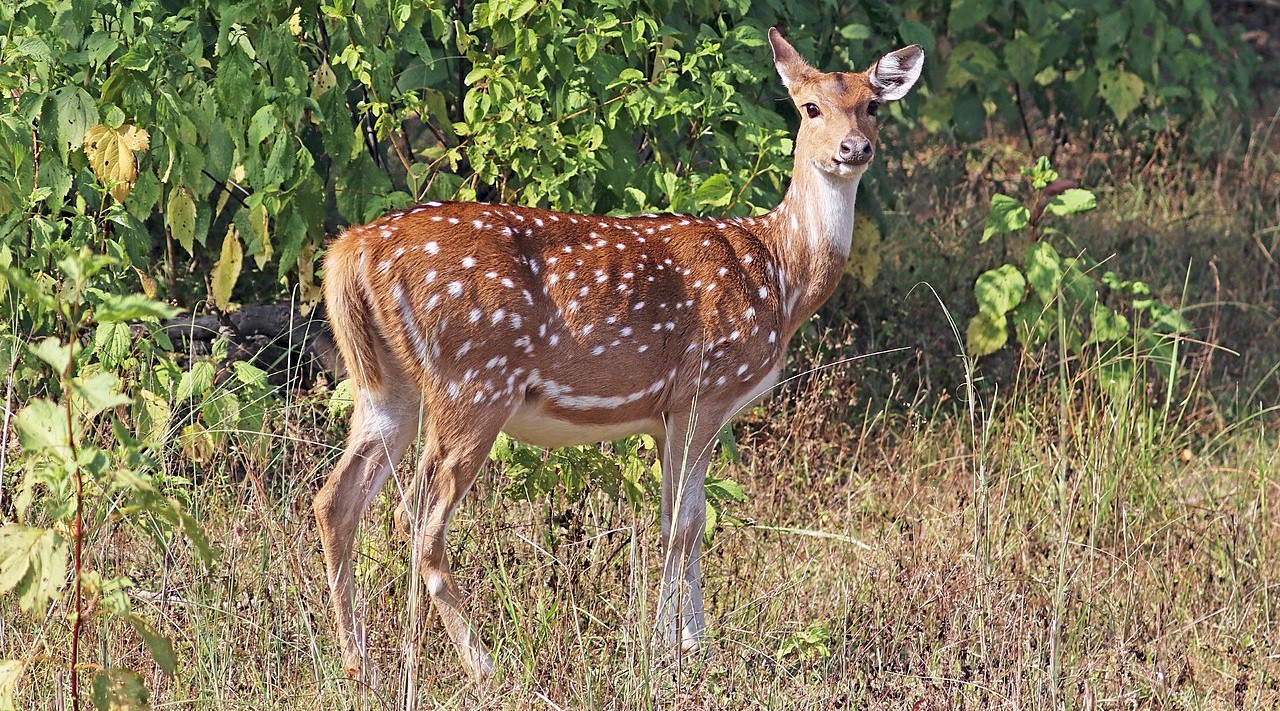
|
Axis deer, also known as Chital deer, are a species of deer native to the Indian subcontinent. They are characterized by their reddish-brown coats with white spots, which provide camouflage in their natural habitats of grasslands and forests. Male axis deer have three-tined antlers, while females are antlerless.
Axis deer are social animals and live in herds. They are herbivores and feed on grasses, leaves, and bark. They are known for
...
|
|
 Barasingha Barasingha
|
|
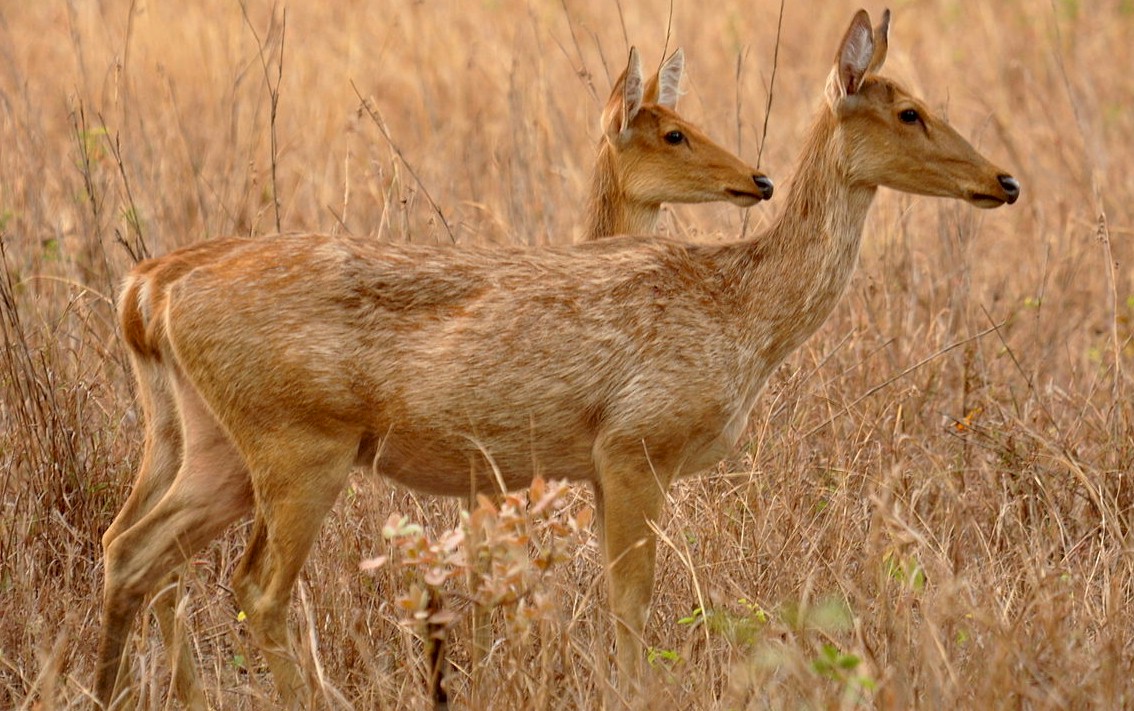
|
Barasingha deer, also known as Swamp deer, is a species of deer found in the wetlands and grasslands of India. They are known for their unique antler structure, which can have as many as 12 tines and resembles a palmate (open-handed) antler.
Barasingha deer have a reddish-brown coat with white underparts and are known for their distinctive roar during the breeding season. They are social animals and form large herds, particularly durin
...
|
|
 Bawean Bawean
|
|
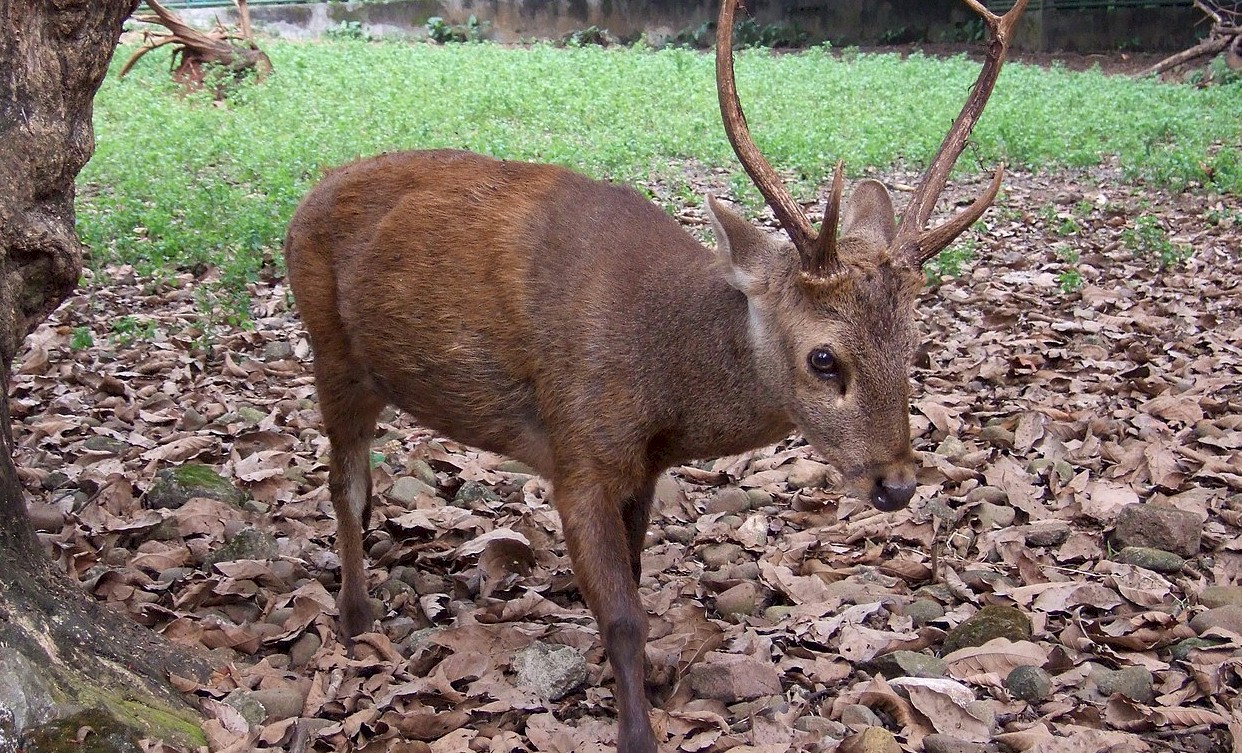
|
The Bawean deer (Hyelaphus kuhlii) is a species of deer that is endemic to the Indonesian island of Bawean. It is a small species of deer and is known for its unique antlers, which are typically composed of two spikes.
The Bawean deer has a reddish-brown coat and is approximately the size of a medium-sized dog. It is a nocturnal species and is known to live in forests and grasslands.
Bawean deer are herbivores and feed on a
...
|
|
 Bornean Yellow Muntjac Bornean Yellow Muntjac
|
|
|
The Bornean Yellow Muntjac (Muntiacus atherodes) is a species of deer found in the forests of Borneo. It is a small species of deer, with a yellowish-brown coat and distinctive tusks (protrusions from the upper jaw).
Bornean Yellow Muntjacs are solitary animals and are known to live in dense forests and swampy areas. They are herbivores and feed on a variety of vegetation, including leaves, shoots, and bark.
These deer are
...
|
|
 Brocket Brocket
|
|
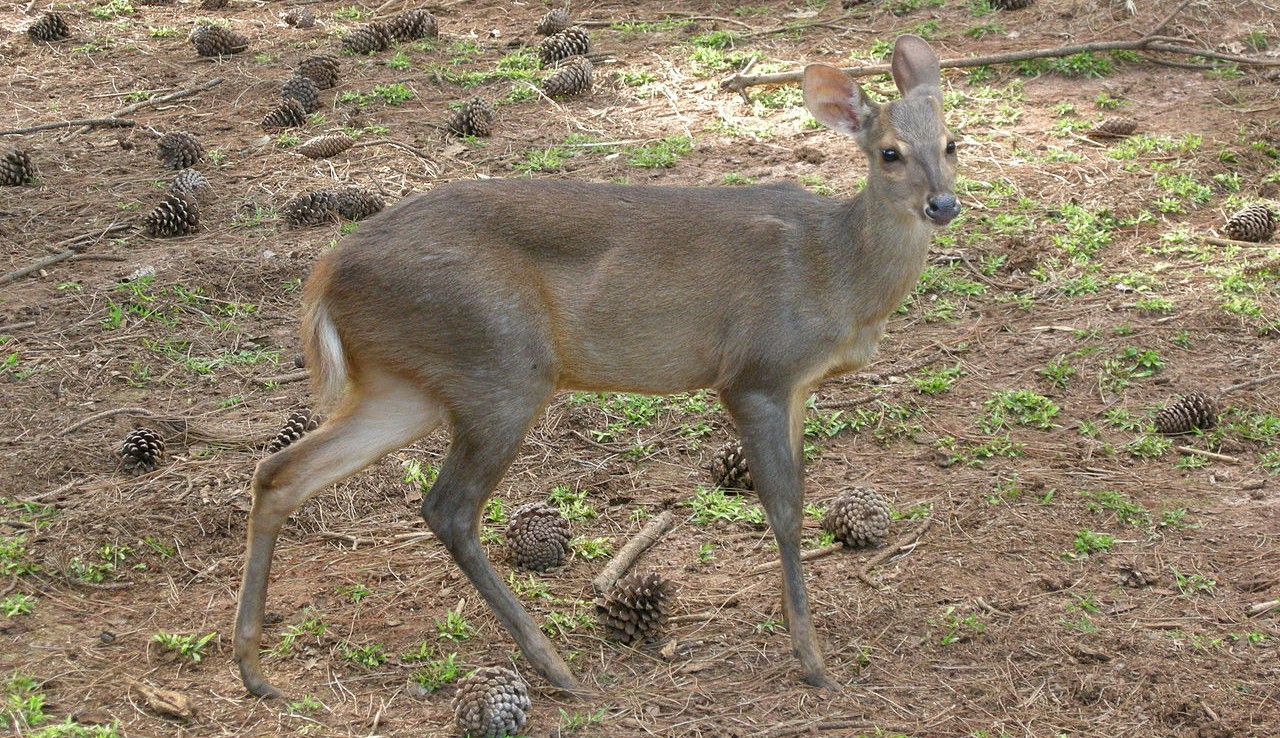
|
Brocket deer are a group of small to medium-sized deer species found in the forests of Central and South America. There are several species of Brocket deer, including the Red Brocket, the Dwarf Brocket, and the Little Brocket.
Brocket deer have a reddish-brown to grayish-brown coat and are known for their short stature and small antlers (in males). They are primarily nocturnal and are known to live in dense forests, where they feed on
...
|
|
 Calamian Calamian
|
|
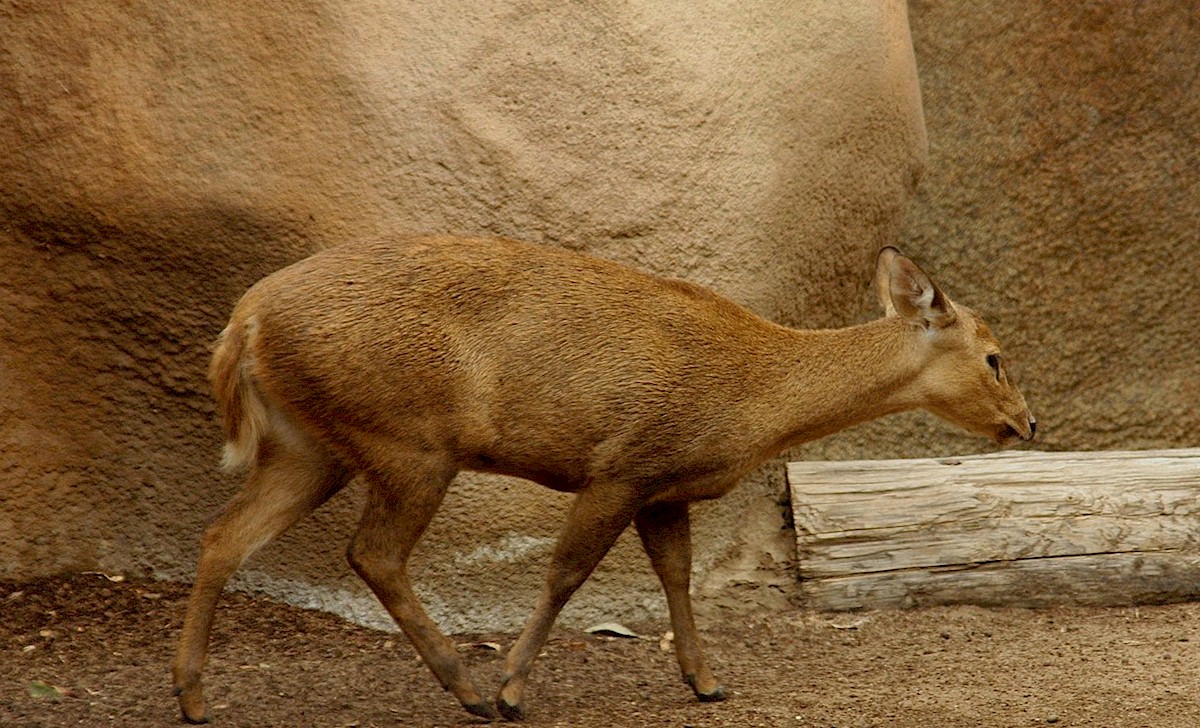
|
The Calamian deer (Cervus calamianensis) is a species of deer found in the Calamian Islands of the Philippines. It is a small to medium-sized deer, with a reddish-brown coat and distinctive antlers (in males).
Calamian deer are solitary animals and are known to live in forests and scrublands. They are herbivores and feed on a variety of vegetation, including leaves, shoots, and bark.
These deer are known for their vocalizati
...
|
|
 Chinese water Chinese water
|
|
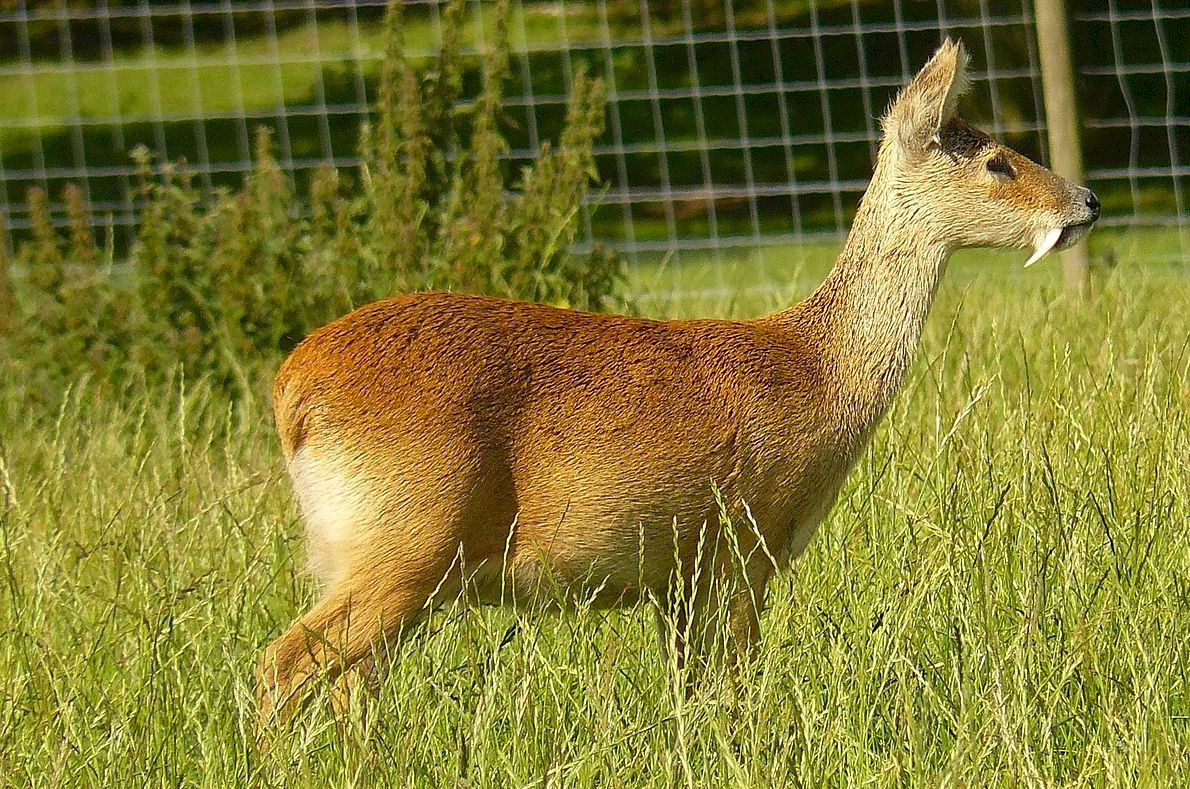
|
The Chinese water deer (Hydropotes inermis) is a species of deer native to China and Korea. It is a small species of deer, with a compact body and distinctive long tusks (upper canines) in males.
Chinese water deer are semi-aquatic animals and are well adapted to living in wetland environments. They are herbivores and feed on a variety of vegetation, including aquatic plants, grasses, and leaves.
These deer are known for the
...
|
|
 Coues Coues
|
|
|
The Coues deer (Odocoileus virginianus couesi) is a subspecies of the White-tailed deer found in the southwestern United States and northern Mexico. It is a medium-sized deer, with a reddish-brown coat and distinctive white tail.
Coues deer are known for their agility and are capable of jumping over obstacles and escaping predators. They are herbivores and feed on a variety of vegetation, including leaves, shoots, and grasses.
|
|
 Elds Elds
|
|
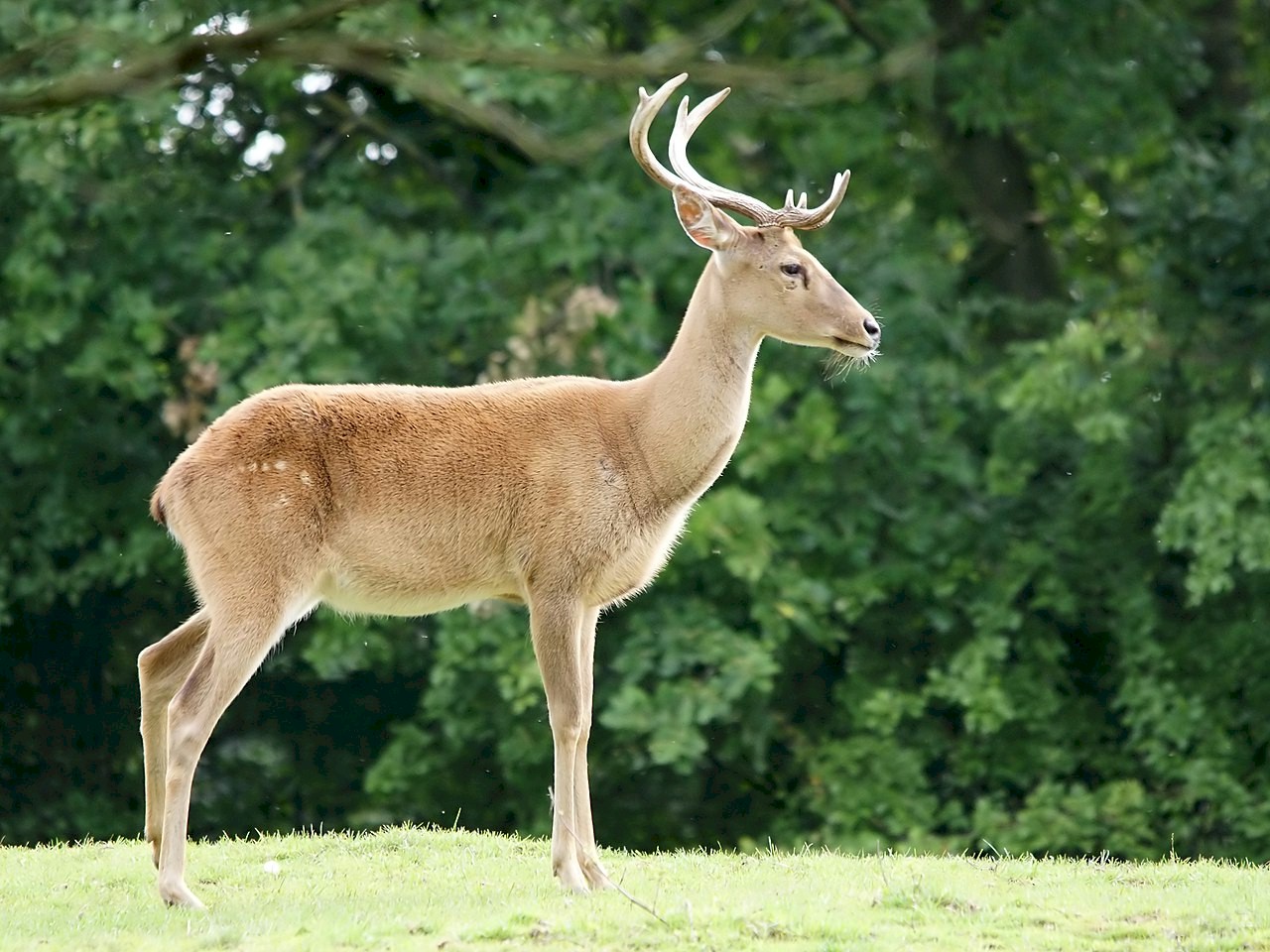
|
The Eld's deer (Rucervus eldii), also known as the Thamin deer, is a species of deer found in Southeast Asia, including Myanmar, Thailand, Cambodia, and Vietnam. It is a medium-sized deer, with a reddish-brown coat and distinctive antlers (in males).
Eld's deer are known for their elegance and are considered to be one of the most beautiful species of deer. They are herbivores and feed on a variety of vegetation, including leaves, shoot
...
|
|
 Elk Elk
|
|
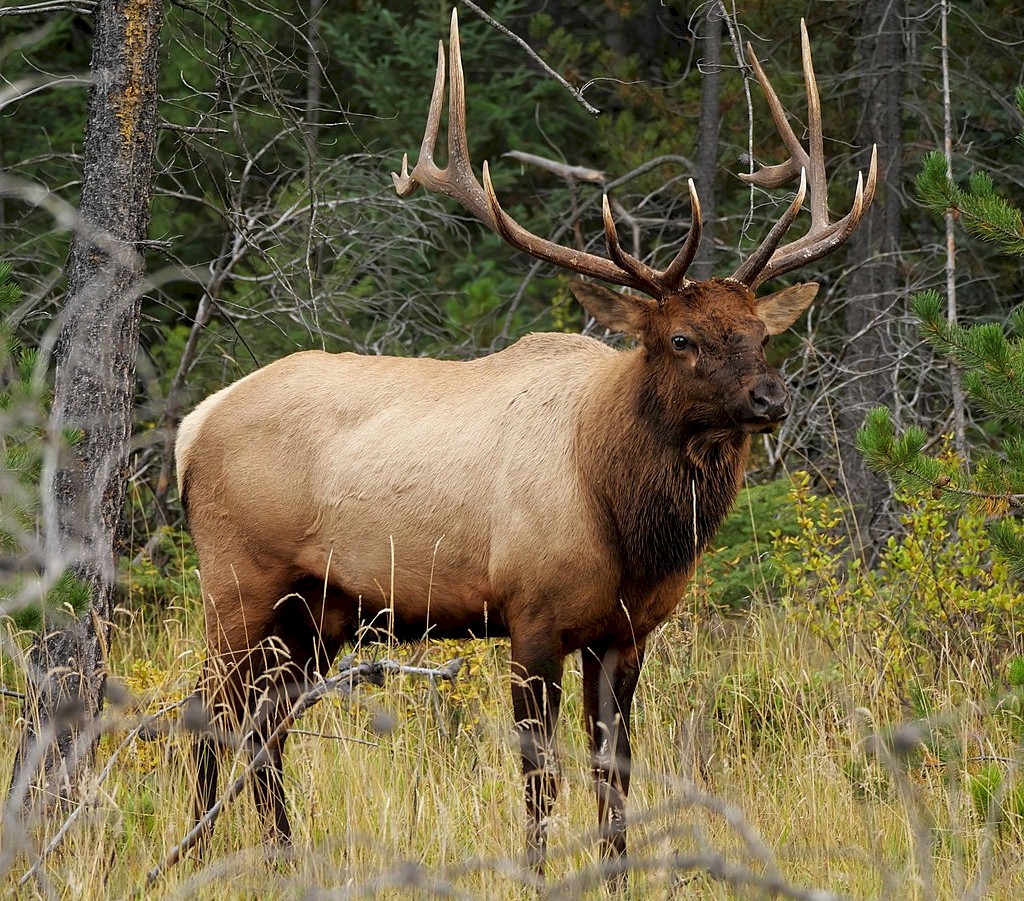
|
Elk, also known as wapiti, are not commonly raised as livestock. Elk are a type of deer native to North America and Eurasia, and are typically hunted for their meat and antlers. However, some elk are raised on private game ranches for hunting or trophy purposes. Elk farming is a relatively niche industry, and the production of elk meat and antlers is limited compared to more traditional livestock species. Elk meat is considered a healthy alternat
...
|
|
 Fallow Fallow
|
|
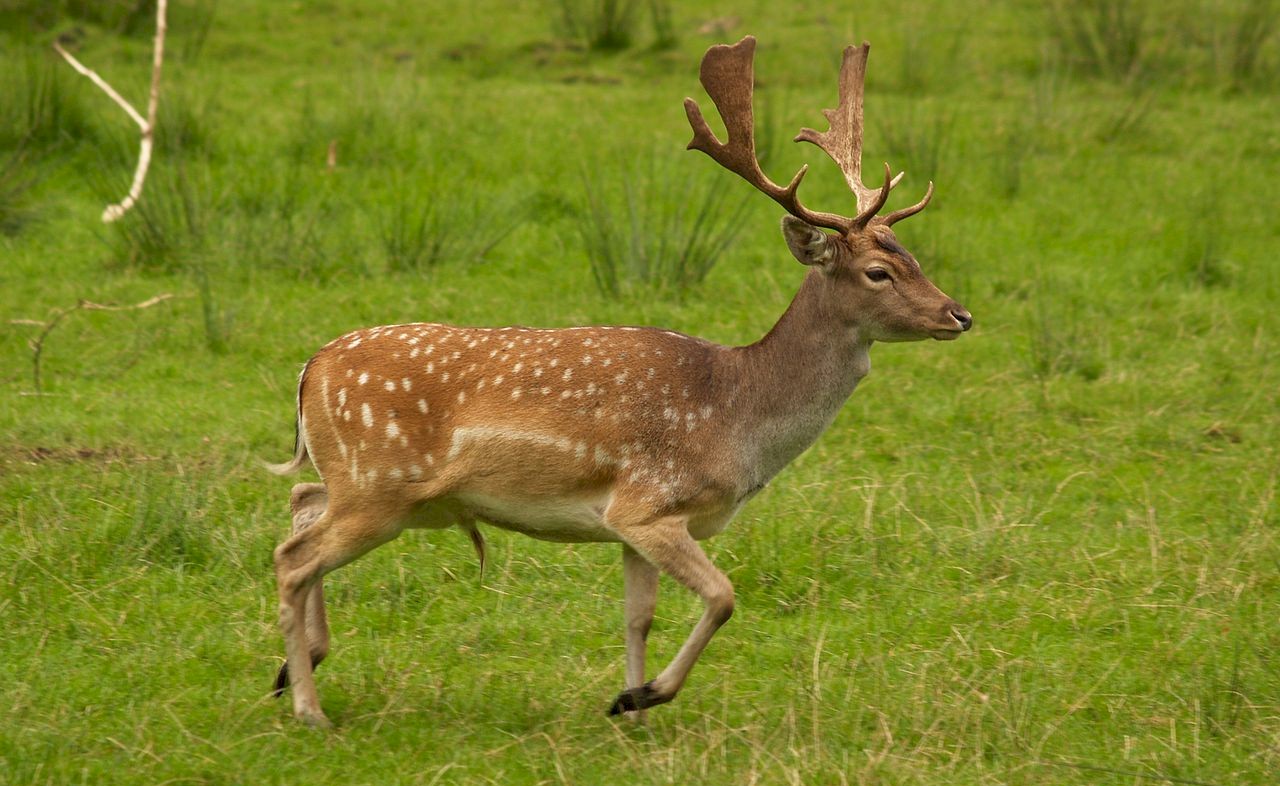
|
The fallow deer (Dama dama) is a species of deer native to Europe, but has been introduced to many other countries around the world. It is a medium-sized deer, with a distinctive coat color that can range from reddish-brown in summer to grayish-brown in winter. The males have palmate antlers.
Fallow deer are known for their agility and are capable of jumping over obstacles and escaping predators. They are herbivores and feed on a varie
...
|
|
 Feas Muntjac Feas Muntjac
|
|
|
Fea's muntjac (Muntiacus feae) is a species of muntjac deer found in Southeast Asia, including Vietnam, Laos, and Cambodia. It is a small species of deer, with a reddish-brown coat and small, simple antlers (in males).
Fea's muntjac are solitary animals and are active both during the day and at night. They are herbivores and feed on a variety of vegetation, including leaves, shoots, and grasses.
These deer are known for thei
...
|
|
 Indian Hog Indian Hog
|
|
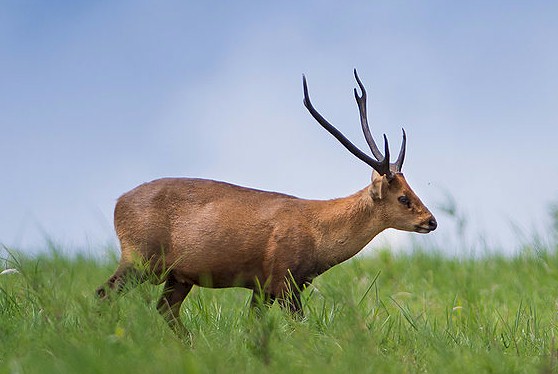
|
The Indian hog deer (Hyelaphus porcinus) is a species of deer found in South and Southeast Asia, including India, Pakistan, Bangladesh, and Indonesia. It is a medium-sized deer, with a dark brown to black coat and distinctive antlers (in males).
Indian hog deer are known for their agility and are capable of jumping over obstacles and escaping predators. They are herbivores and feed on a variety of vegetation, including leaves, shoots,
...
|
|
 Indian Muntjac Indian Muntjac
|
|
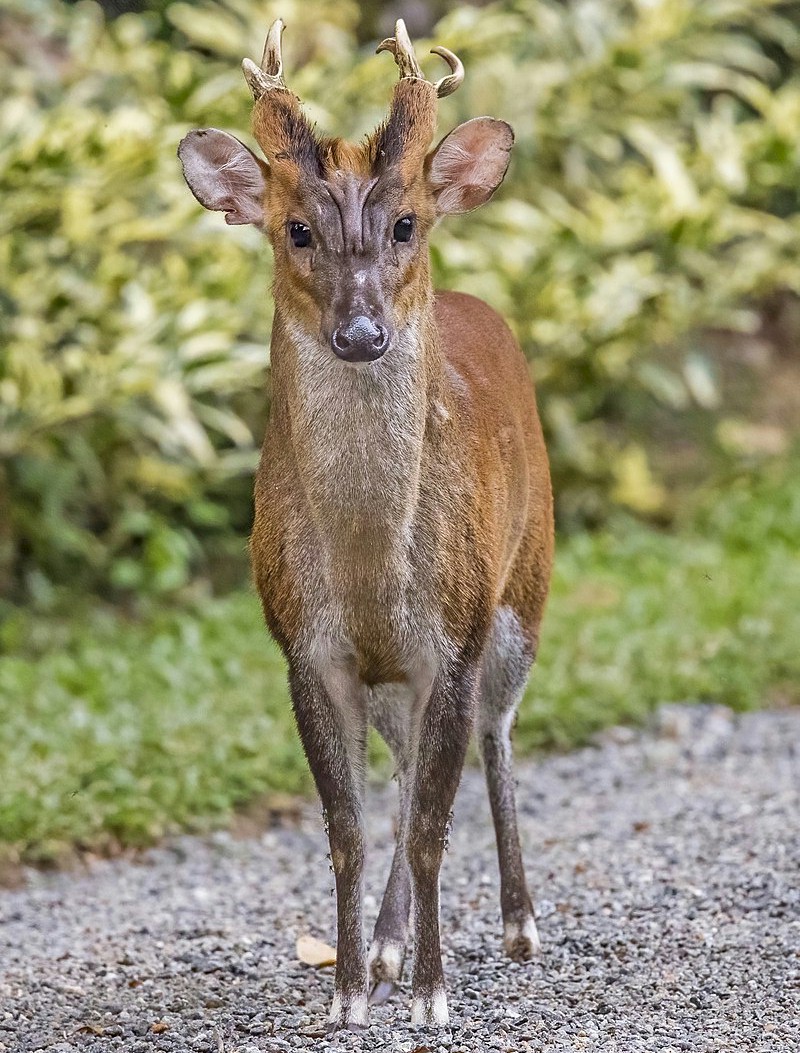
|
The Indian muntjac (Muntiacus muntjak), also known as the barking deer, is a species of muntjac deer found in South and Southeast Asia, including India, Bangladesh, and Indonesia. It is a small species of deer, with a reddish-brown coat and small, simple antlers (in males).
Indian muntjac are solitary animals and are active both during the day and at night. They are herbivores and feed on a variety of vegetation, including leaves, shoo
...
|
|
 Indian Sambar Indian Sambar
|
|
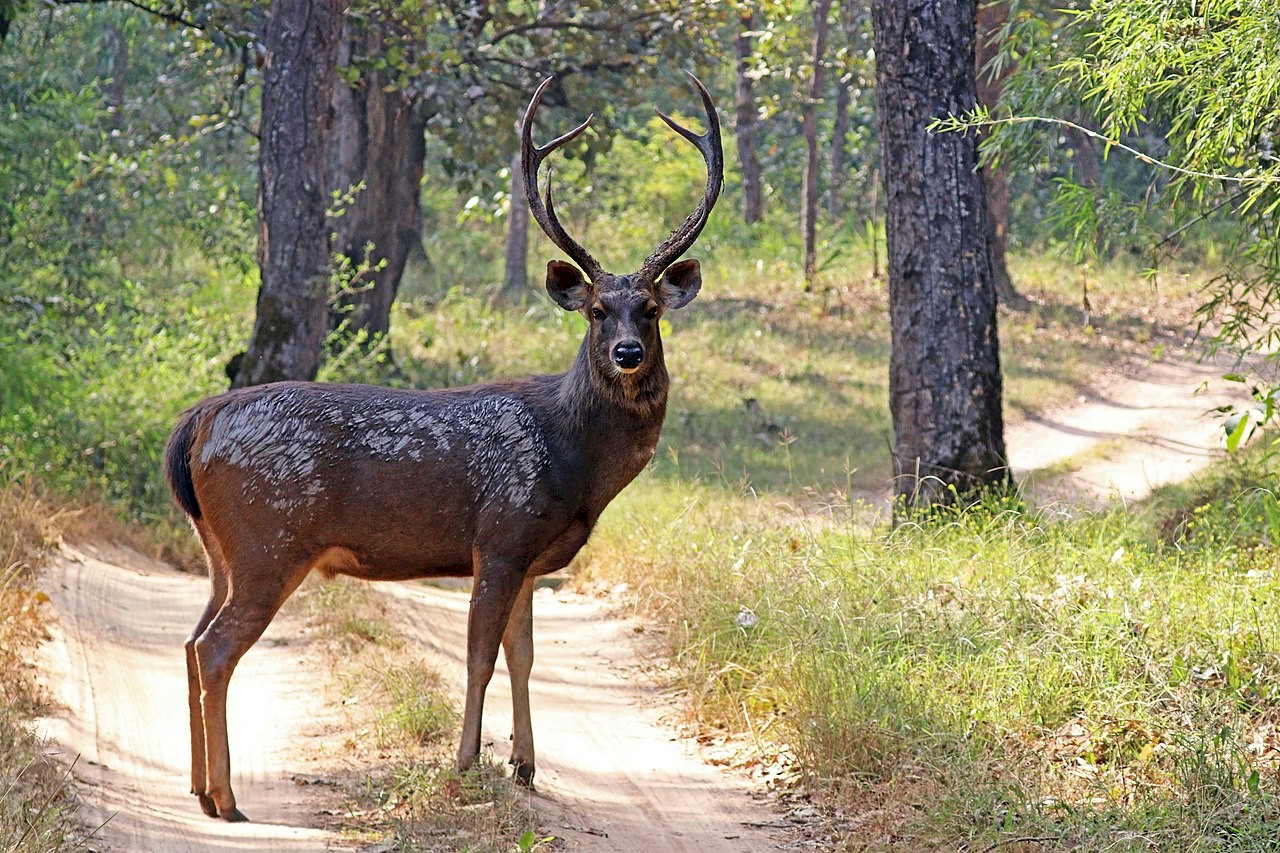
|
The Indian sambar deer (Rusa unicolor) is a species of deer found in South and Southeast Asia, including India, Sri Lanka, and Indonesia. It is a large species of deer, with a shaggy coat that can range from reddish-brown to grayish-brown. The males have large, spiraled antlers.
Indian sambar deer are known for their adaptability and can be found in a variety of habitats, including forests, grasslands, and wetlands. They are herbivores
...
|
|
 Key Key
|
|
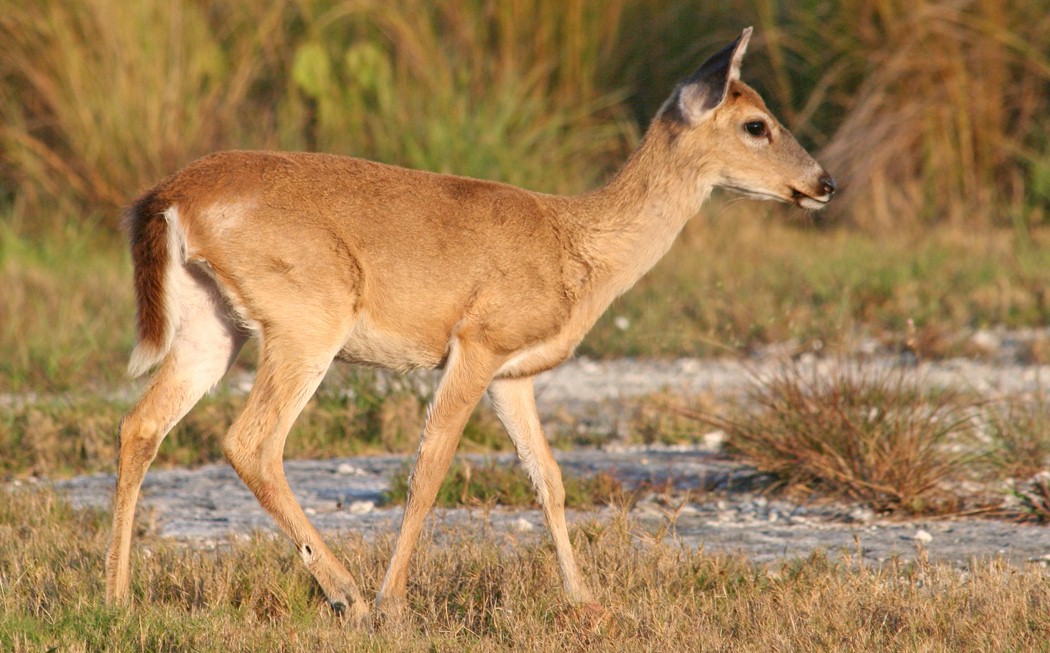
|
The Key deer (Odocoileus virginianus clavium) is a subspecies of the white-tailed deer (Odocoileus virginianus) that is endemic to the Florida Keys in the United States. It is a small species of deer, with a reddish-brown coat and white underparts. The males have small, simple antlers.
Key deer are adapted to the unique habitats of the Florida Keys, including pine rocklands and tropical hardwood hammocks. They are herbivores and feed o
...
|
|
 Marsh Marsh
|
|
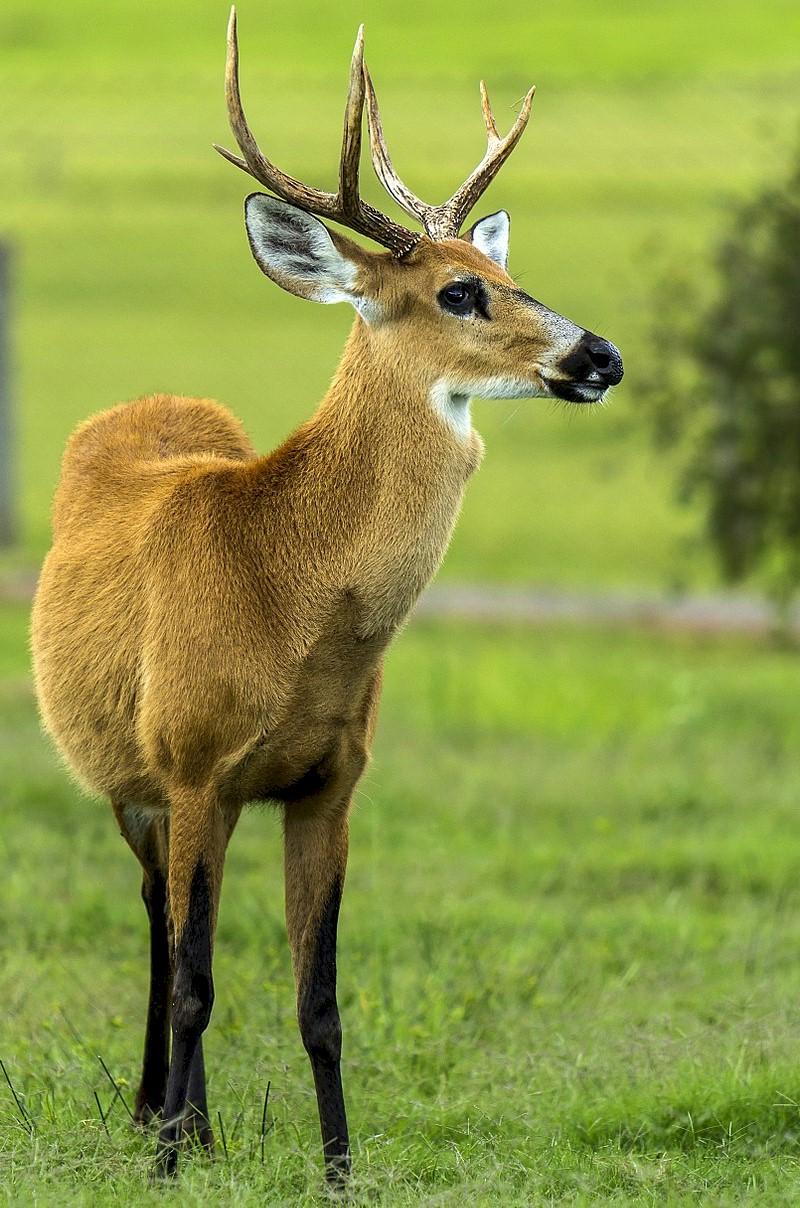
|
The marsh deer (Blastocerus dichotomus) is a species of deer found in South America, primarily in wetland and marshy habitats. It is a large species of deer, with a reddish-brown coat and long legs adapted for navigating through wetland habitats. The males have large, complex antlers.
Marsh deer are herbivores and feed on a variety of vegetation, including aquatic plants, grasses, and shrubs. They are known to be solitary animals and a
...
|
|
 Moose Moose
|
|
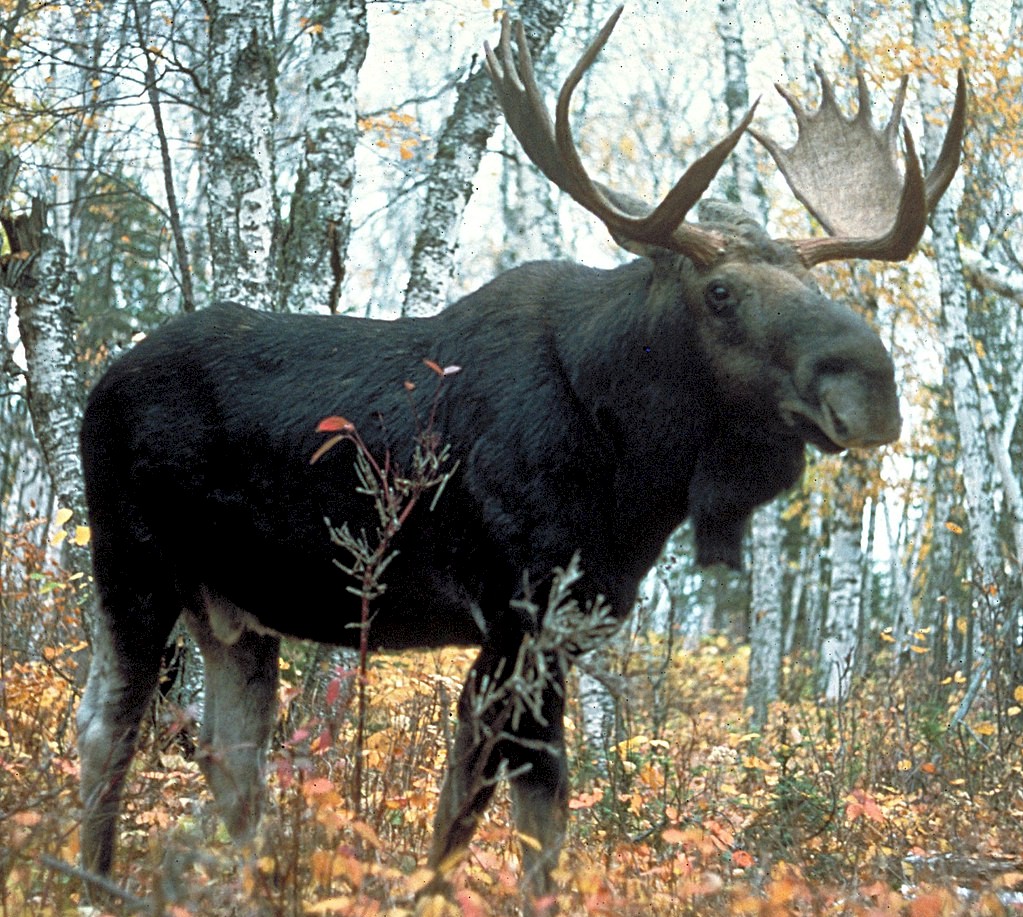
|
The moose (Alces alces) is a species of deer found in northern North America and Eurasia. It is the largest species of deer, with a distinctive broad, flat antler structure and a long, shaggy coat that can range from brown to black. The males, or bulls, have large, palmate antlers, while the females, or cows, have smaller, simple antlers or none at all.
Moose are well-adapted to the northern climates and are found in a variety of habit
...
|
|
 Mule Mule
|
|
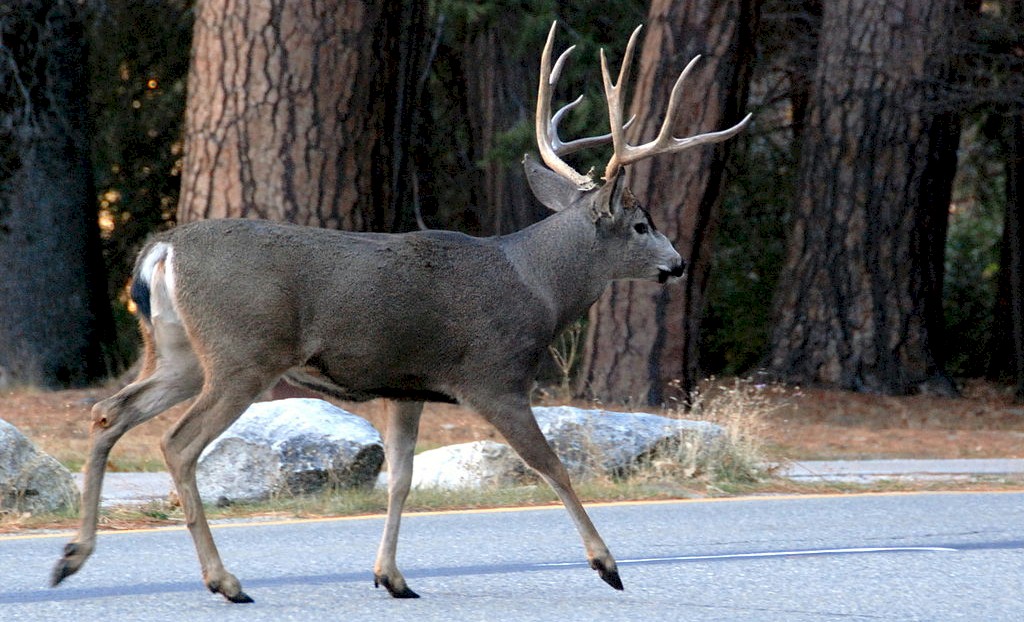
|
The mule deer (Odocoileus hemionus) is a species of deer found in western North America. It is named for its large, mule-like ears, which are much larger than those of other species of deer. Mule deer have a reddish-brown coat and a white underbelly and tail. The males have small to medium-sized, simple antlers.
Mule deer are found in a variety of habitats, including deserts, forests, and grasslands, and are adaptable to different envi
...
|
|
 Muntjac Muntjac
|
|
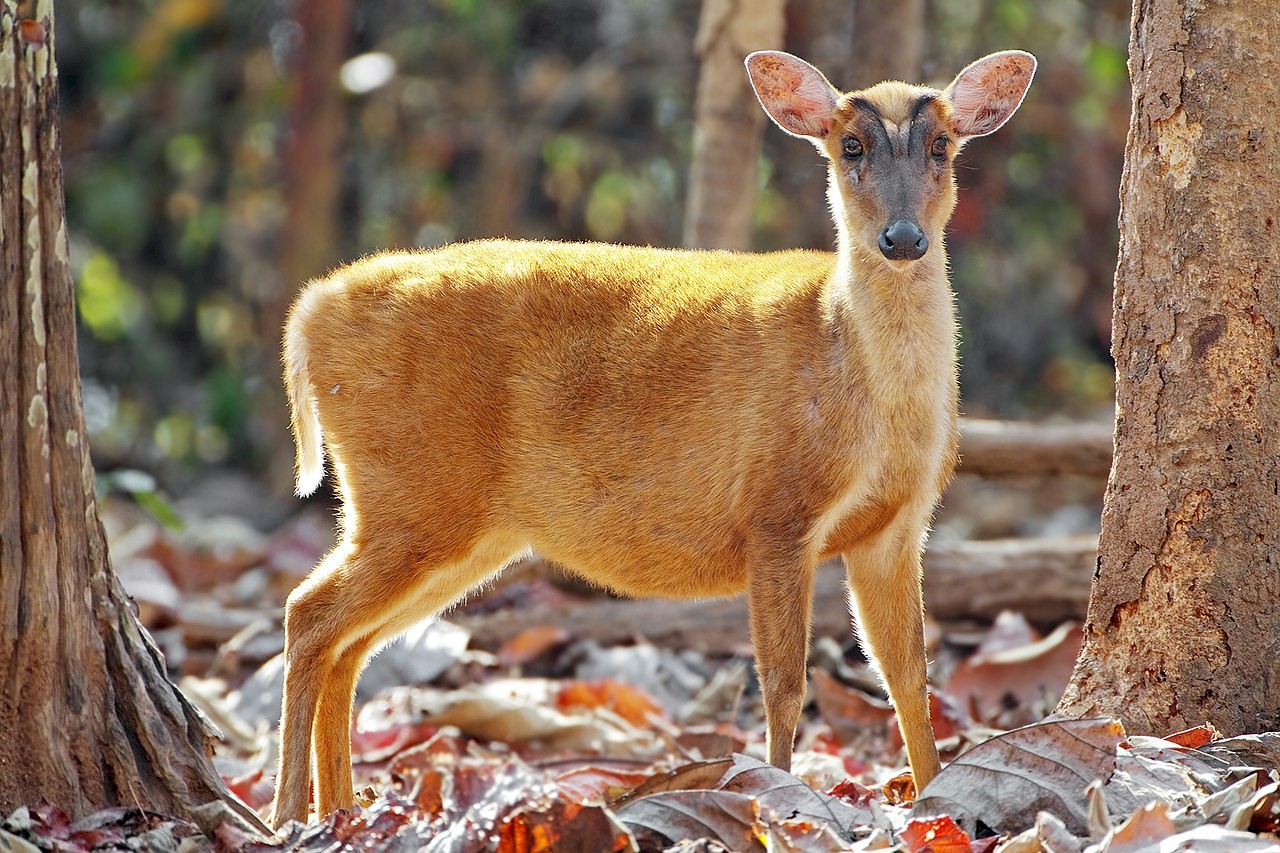
|
The muntjac deer, also known as the barking deer, is a species of deer found in Southeast Asia and parts of South Asia. It is one of the smallest species of deer, with a distinctive short, upward-pointing snout and short, spiked antlers. Muntjac deer have a reddish-brown to brown coat and are known for their distinctive vocalizations, which include barks and grunts.
Muntjac deer are found in a variety of habitats, including forests, gr
...
|
|
 Northern Pudu Northern Pudu
|
|
|
The Northern pudu (Pudu mephistophiles) is a species of deer found in South America. It is one of the smallest species of deer, with a distinctive short, rounded body and small antlers. The Northern pudu has a brown or reddish-brown coat with a white underbelly and is known for its large, rounded ears.
The Northern pudu is found in a variety of habitats, including forests, grasslands, and cultivated areas, and is able to adapt to diffe
...
|
|
 Pampas Pampas
|
|
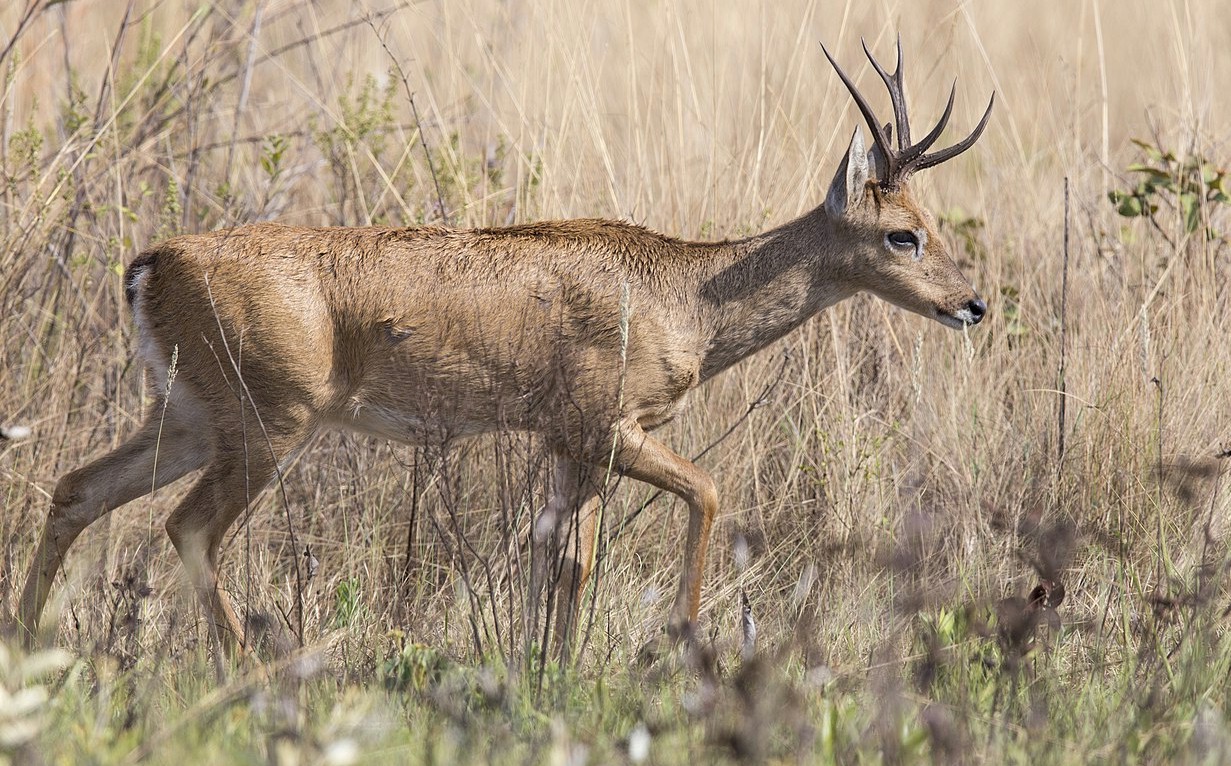
|
The Pampas deer (Ozotoceros bezoarticus) is a species of deer found in South America. It is a medium-sized deer with a distinctive reddish-brown coat and white spots on its legs and underbelly. The Pampas deer has large antlers that are used for defense and competition for mates.
The Pampas deer is found in grasslands, savannas, and other open habitats and is known for its ability to adapt to a range of environments. It is an herbivore
...
|
|
 Pere Davids Pere Davids
|
|
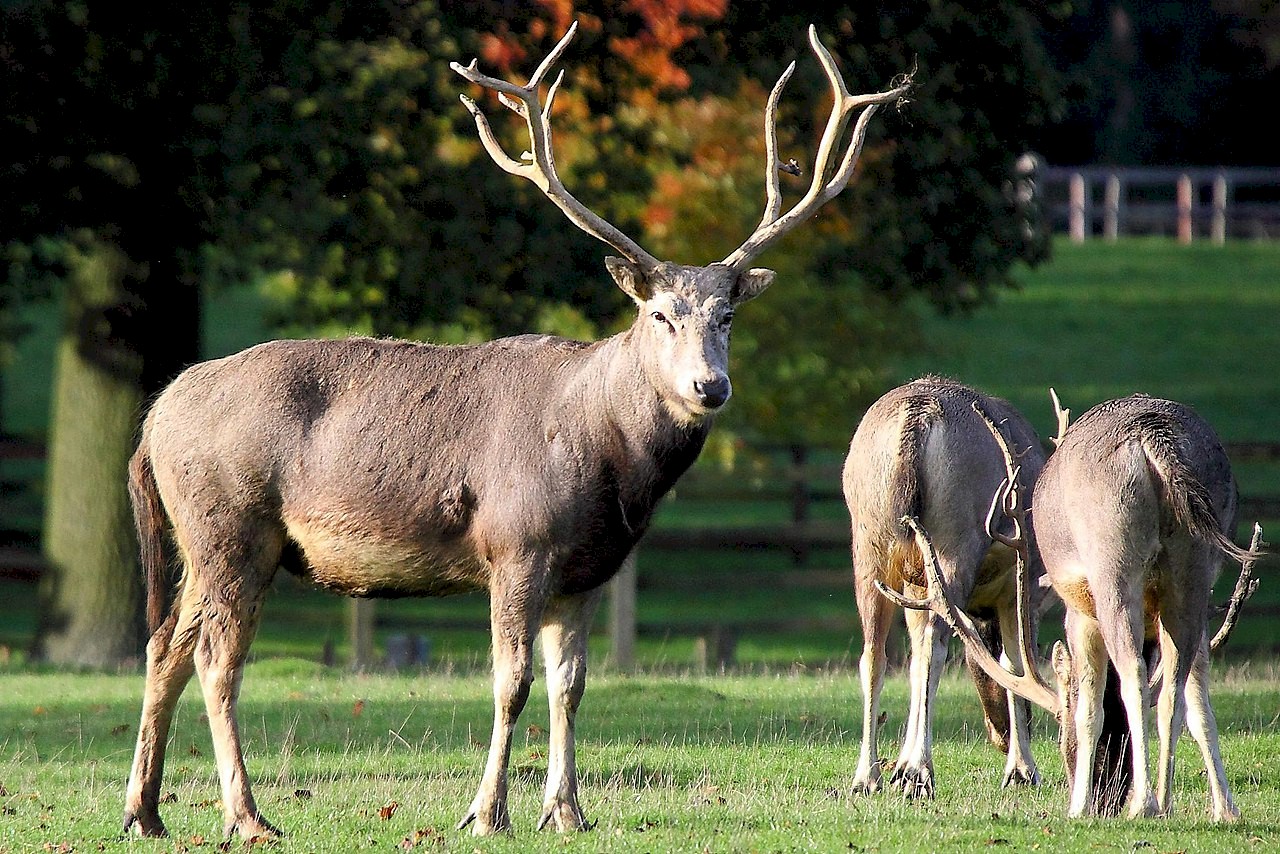
|
The Pere David's deer (Elaphurus davidianus) is a species of deer native to China. It is also known as the milu deer. It is a large deer, with a distinctive hump of muscle on its shoulders and long, spiral antlers. The Pere David's deer has a light brown coat with white spots on its legs and underbelly.
The Pere David's deer is a herbivore, feeding on grasses, leaves, and aquatic plants. It is found in wetland habitats, including marsh
...
|
|
 Persian Fallow Persian Fallow
|
|
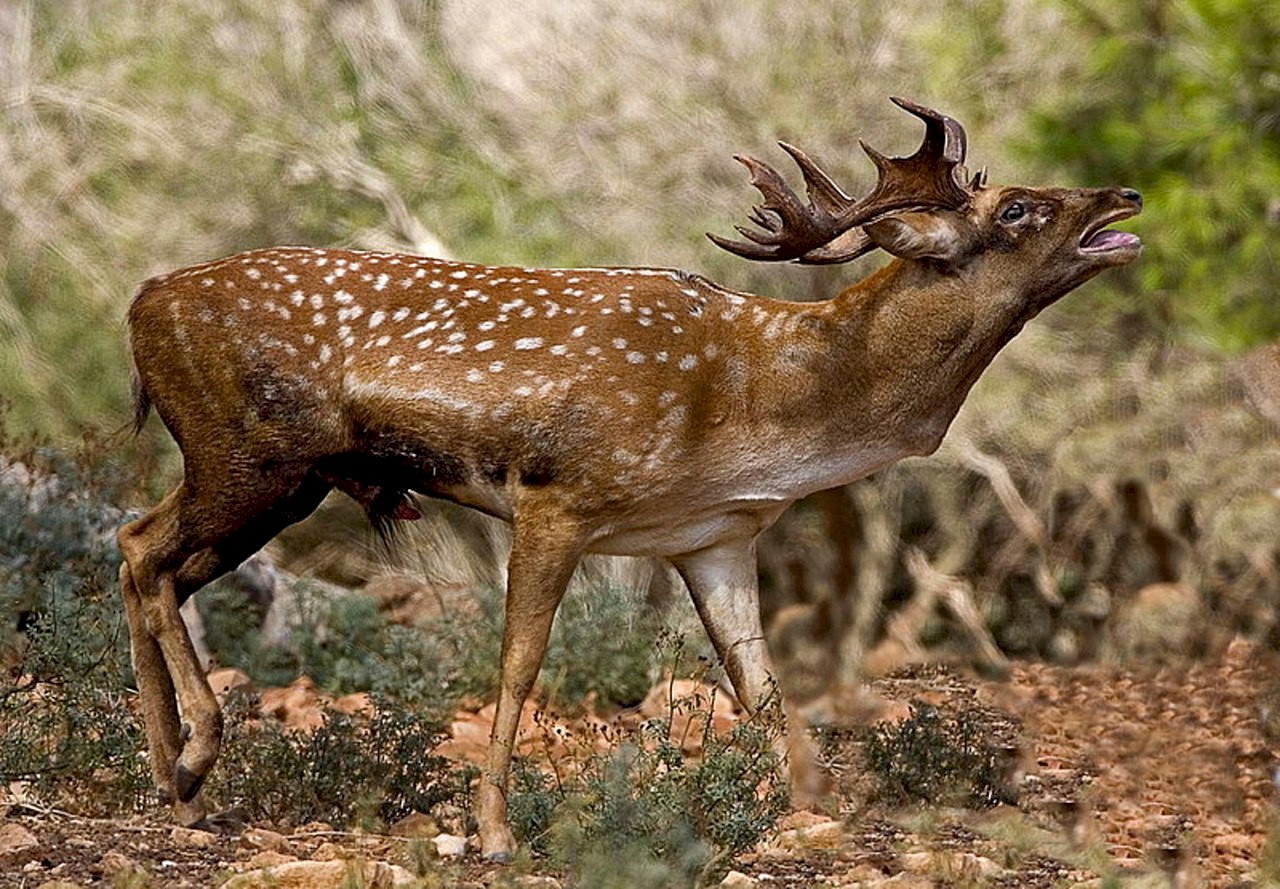
|
The Persian fallow deer, so gentle and fair,
With a coat of rich brown and mane like a bear.
In the fields of Iran, it roams free and wild,
A symbol of beauty, so rare and so mild.
With antlers so grand, and eyes like the stars,
It dances and prances, so graceful by far.
A herbivore gentle, it feeds on the grass,
And rests in the shade, as the day doth pass.
Once thought to be gone, a memory of
...
|
|
 Philippine Philippine
|
|
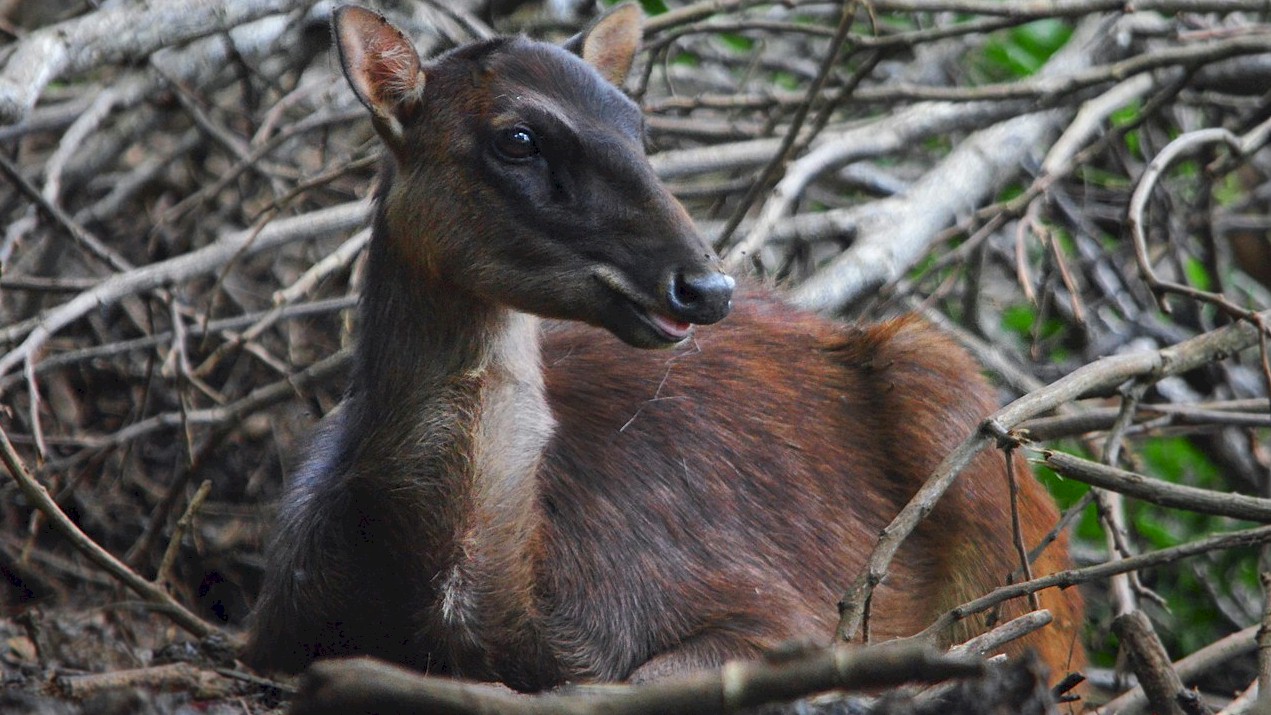
|
The Philippine Deer, also known as the Philippine Sambar, is a species of deer native to the Philippines. It is one of the largest species of deer found in Southeast Asia, with males weighing up to 200 kilograms. The Philippine Deer has a reddish-brown coat, with white spots on the back and legs. It is primarily found in the forests of the Philippines, particularly on the islands of Luzon, Mindanao, and Mindoro.
The Philippine Deer is
...
|
|
 Philippine Spotted Philippine Spotted
|
|
|
The Philippine Spotted Deer, also known as the Philippine Sambar or the Visayan Spotted Deer, is a species of deer native to the Philippines. It is a medium-sized deer, with males weighing up to 120 kilograms and females weighing up to 90 kilograms. The Philippine Spotted Deer has a reddish-brown coat, with white spots on the back and legs, and long, pointed antlers.
The Philippine Spotted Deer is found primarily in the forested region
...
|
|
 Red Red
|
|
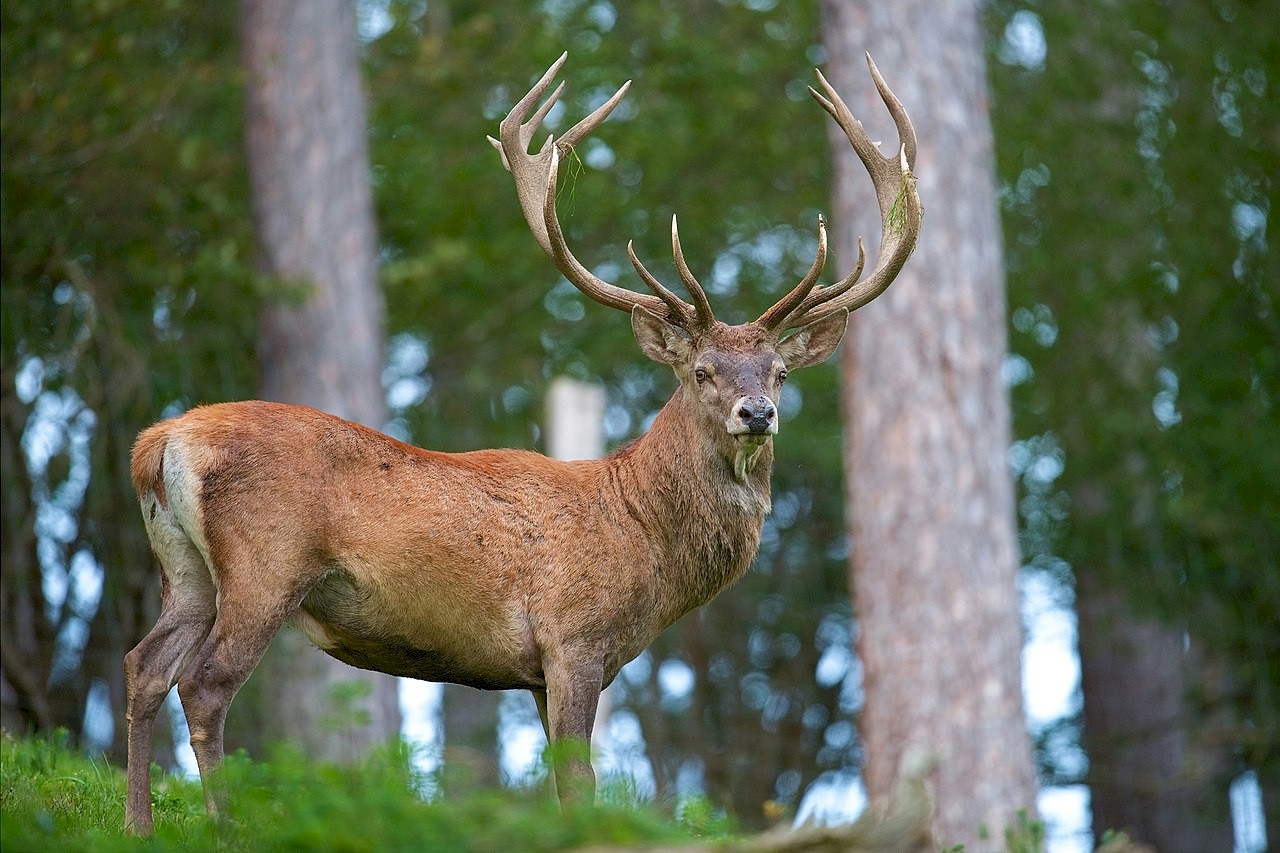
|
Red deer is a species of deer that is native to Europe, Asia, and northern Africa. It is a large deer, with males (stags) weighing up to 200 kilograms and females (hinds) weighing up to 140 kilograms. Red deer have a distinctive reddish-brown coat, a mane of hair around the neck, and large antlers that are shed and regrown each year.
Red deer are found in a variety of habitats, including forests, grasslands, and mountain ranges. They a
...
|
|
 Reeves Muntjac Reeves Muntjac
|
|
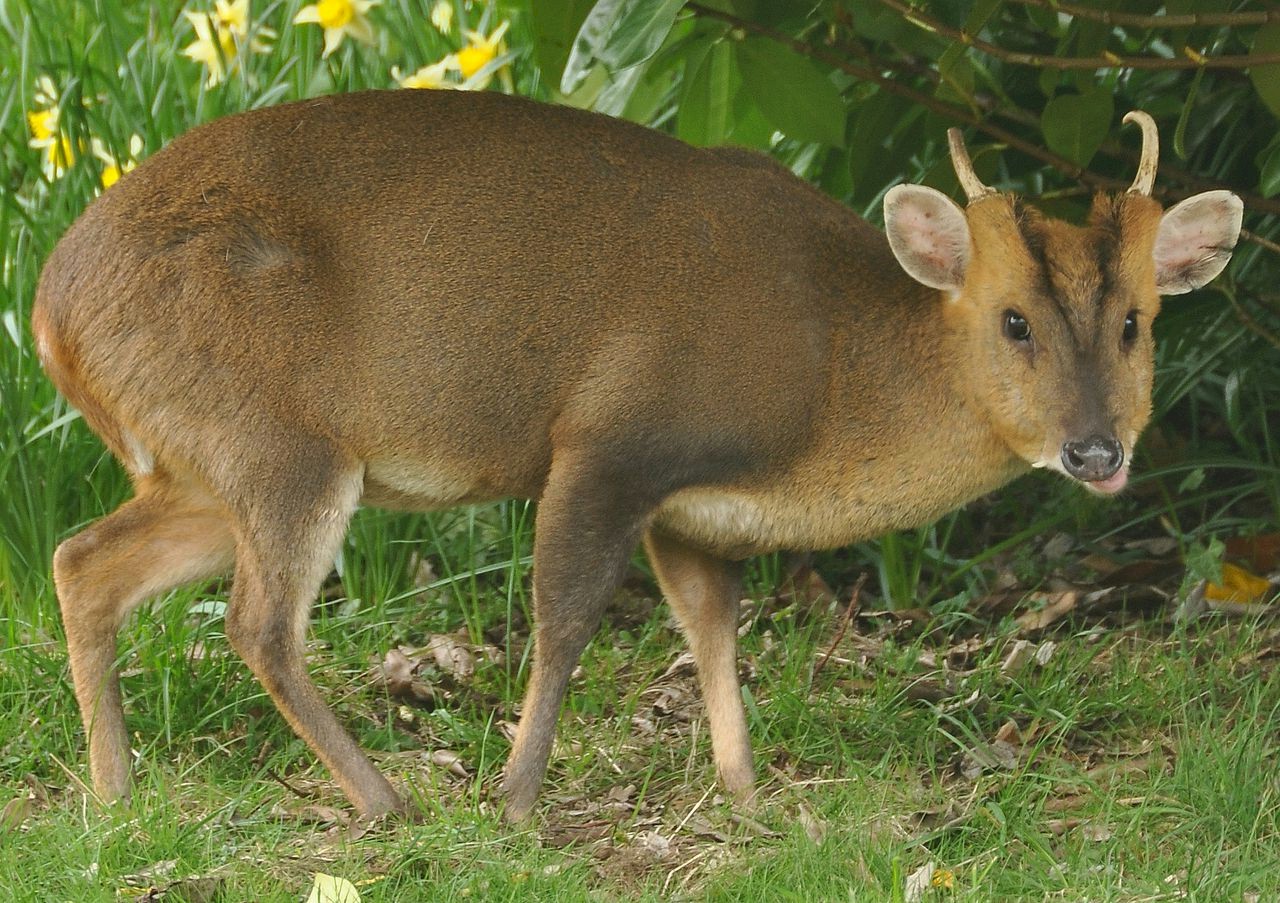
|
The Reeves' Muntjac, also known as the Chinese Muntjac or the Barking Deer, is a species of deer native to China, Taiwan, and Vietnam. It is a small deer, with a body length of up to 90 centimeters and a weight of up to 20 kilograms. The Reeves' Muntjac has a brown coat, short antlers, and a distinctive vocalization, which is a loud barking sound that gives it its common name.
Reeves' Muntjac are found in a variety of habitats, includi
...
|
|
 Reindeer Reindeer
|
|
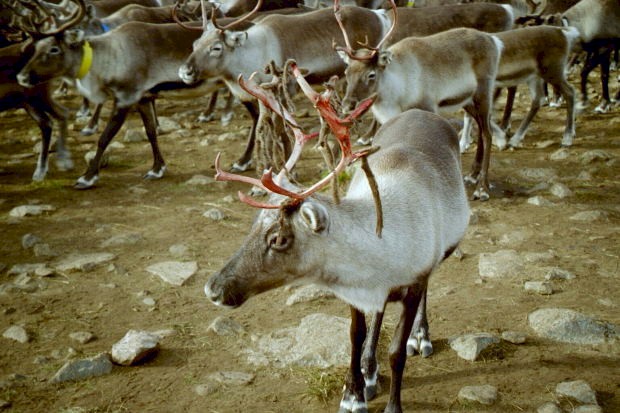
|
Reindeer, also known as caribou, are raised for meat, antlers, and hides. Reindeer meat is low in fat and high in protein. Reindeer antlers are used in traditional medicine, and are also used to make decorative items, such as knife handles and furniture.
Reindeer, are a type of deer native to the Arctic regions of Europe, Asia, and North America. They are well-adapted to harsh environments and are able to thrive in cold climates and
...
|
|
 Roe Roe
|
|
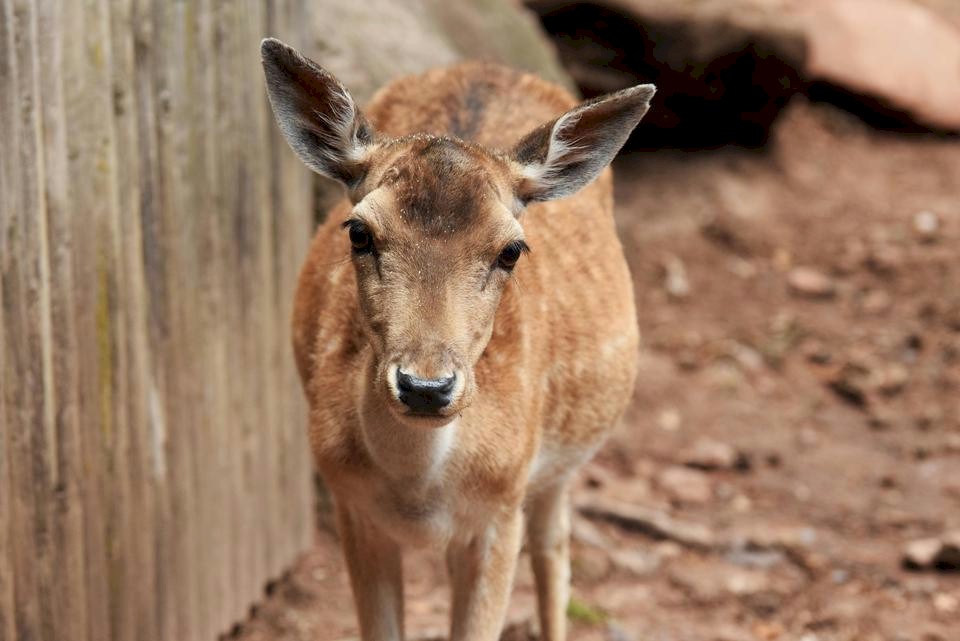
|
The Roe Deer, also known as the Western Roe Deer, is a species of deer that is native to Europe and Asia. It is a small to medium-sized deer, with a body length of up to 140 centimeters and a weight of up to 40 kilograms. Roe Deer have a reddish-brown coat with a white underbelly and distinctive white spots. They are known for their agility and speed, which makes them difficult to hunt.
Roe Deer are found in a variety of habitats, incl
...
|
|
 Rusa Rusa
|
|
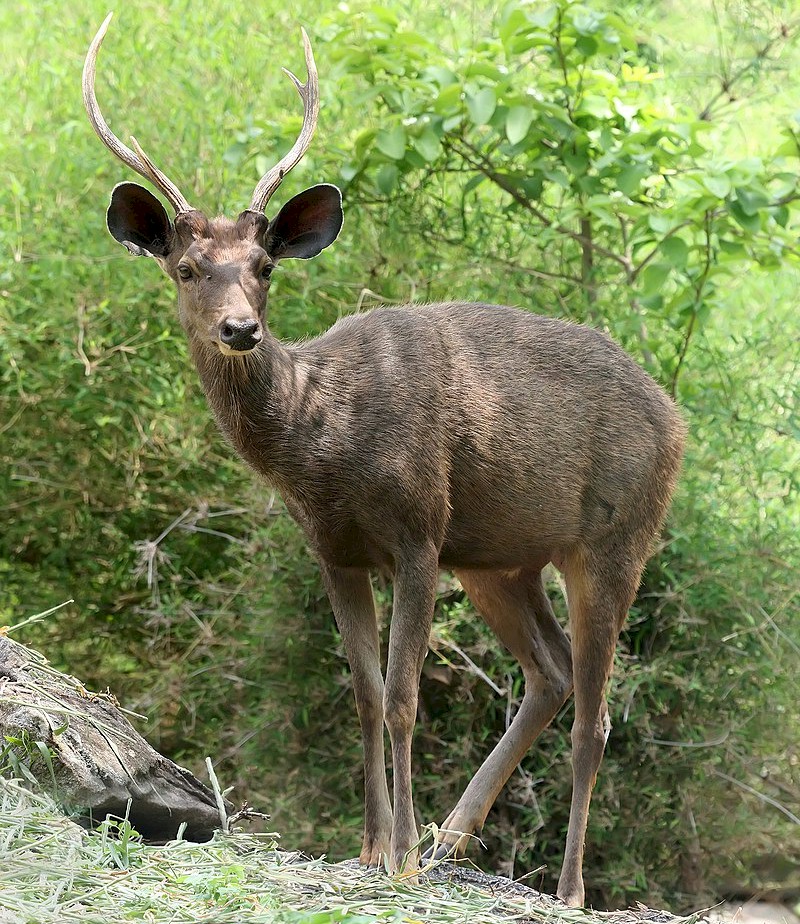
|
The Rusa Deer, also known as the Sambar Deer, is a species of deer that is native to Southeast Asia, including the Philippines, Indonesia, and Malaysia. It is a large deer, with a body length of up to 190 centimeters and a weight of up to 200 kilograms. Rusa Deer have a dark brown coat with a white underbelly, and they are known for their large antlers and distinctive, horse-like faces.
Rusa Deer are found in a variety of habitats, inc
...
|
|
 Sika Sika
|
|
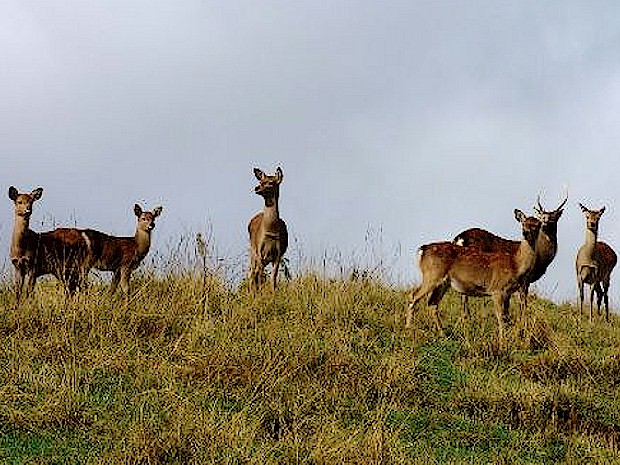
|
The Sika Deer (Cervus nippon) is a species of deer native to East Asia, including Japan, China and Korea. They have a distinctive appearance, with a dark coat and distinctive white spots on their legs. They are known for their vocalizations, including barks and grunts, and for their tendency to exhibit aggressive behavior during the mating season.
Sika deer are a medium-sized deer, standing about 3 feet tall at the shoulder and weighin
...
|
|
 South Andean South Andean
|
|
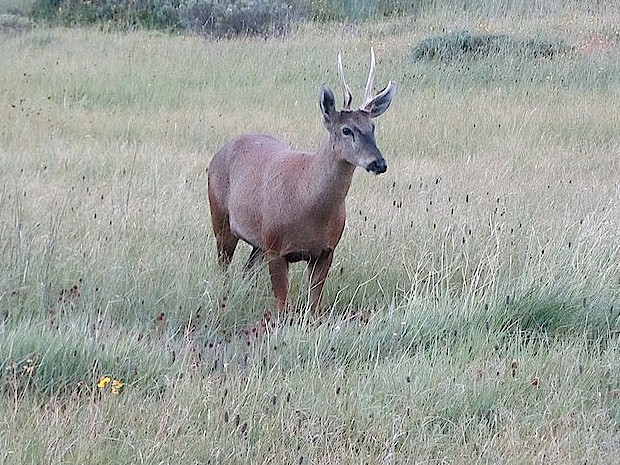
|
The South Andean Deer (Hippocamelus bisulcus), also known as the Chilean Huemul, is a species of deer native to the Andes mountains in South America. It is one of the two species of deer found in Chile, the other being the Northern Huemul.
The South Andean Deer has a distinctive appearance, with a reddish-brown coat and white spots on its legs. It has a stocky build and is relatively small compared to other deer species, standing about
...
|
|
 Southern Pudu Southern Pudu
|
|
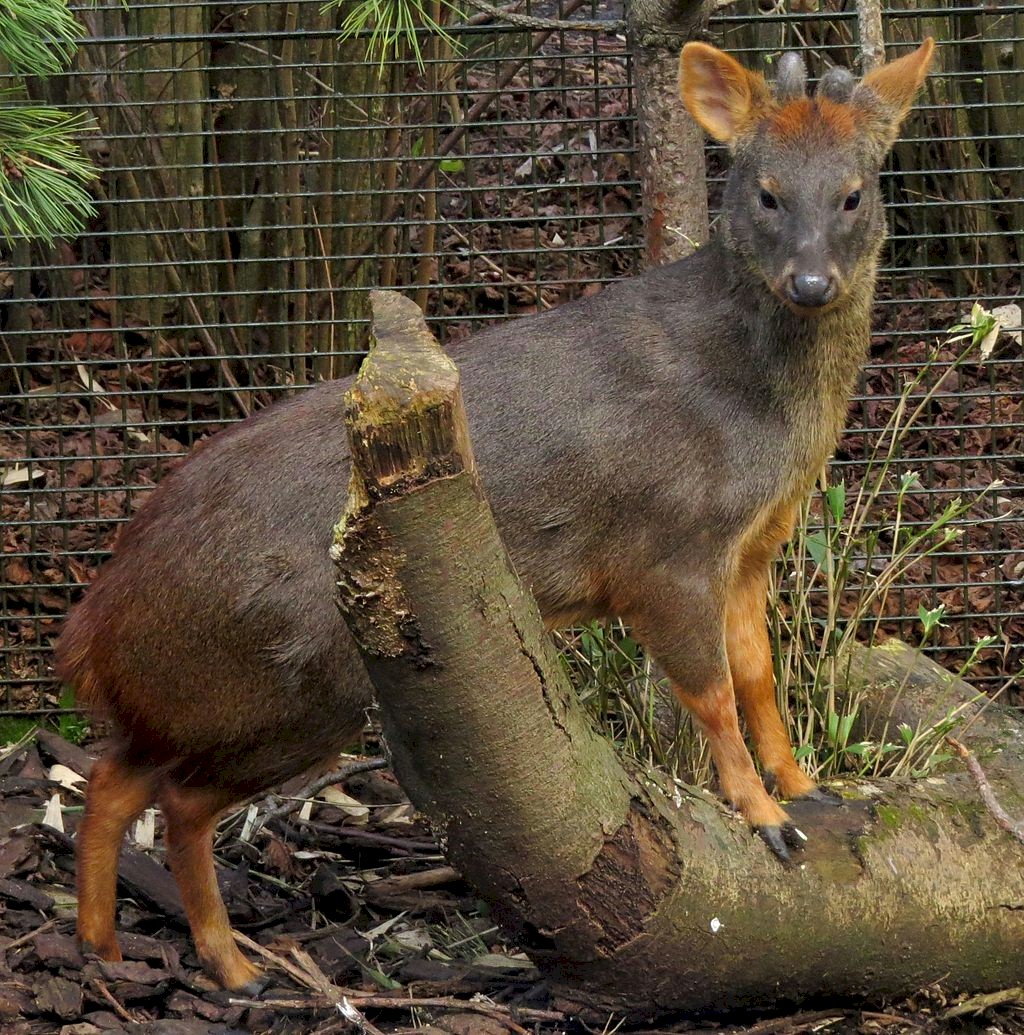
|
The Southern Pudu (Pudu puda) is a species of deer native to South America, found in the temperate forests of Chile and Argentina. It is the smallest species of deer in the world, standing only about 1 foot tall at the shoulder and weighing up to 44 pounds.
The Southern Pudu has a reddish-brown coat with white spots and distinctive, curved antlers in males. It is a solitary animal, spending most of its time in dense vegetation and unde
...
|
|
 Taruca Taruca
|
|
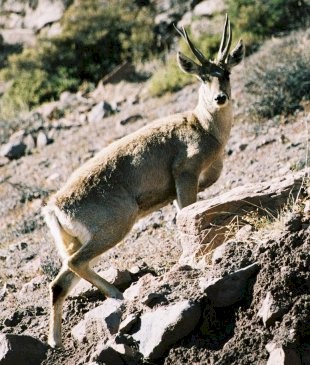
|
The Taruca (Hippocamelus antisensis) is a species of deer native to the Andes mountains in South America. It is also known as the Andean deer or northern Huemul.
The Taruca is a medium-sized deer, standing about 4 feet tall at the shoulder and weighing up to 220 pounds. It has a reddish-brown coat with white spots and a distinctive white patch on its rump. The males have large, curved antlers.
These deer are herbivores, feed
...
|
|
 Tufted Tufted
|
|
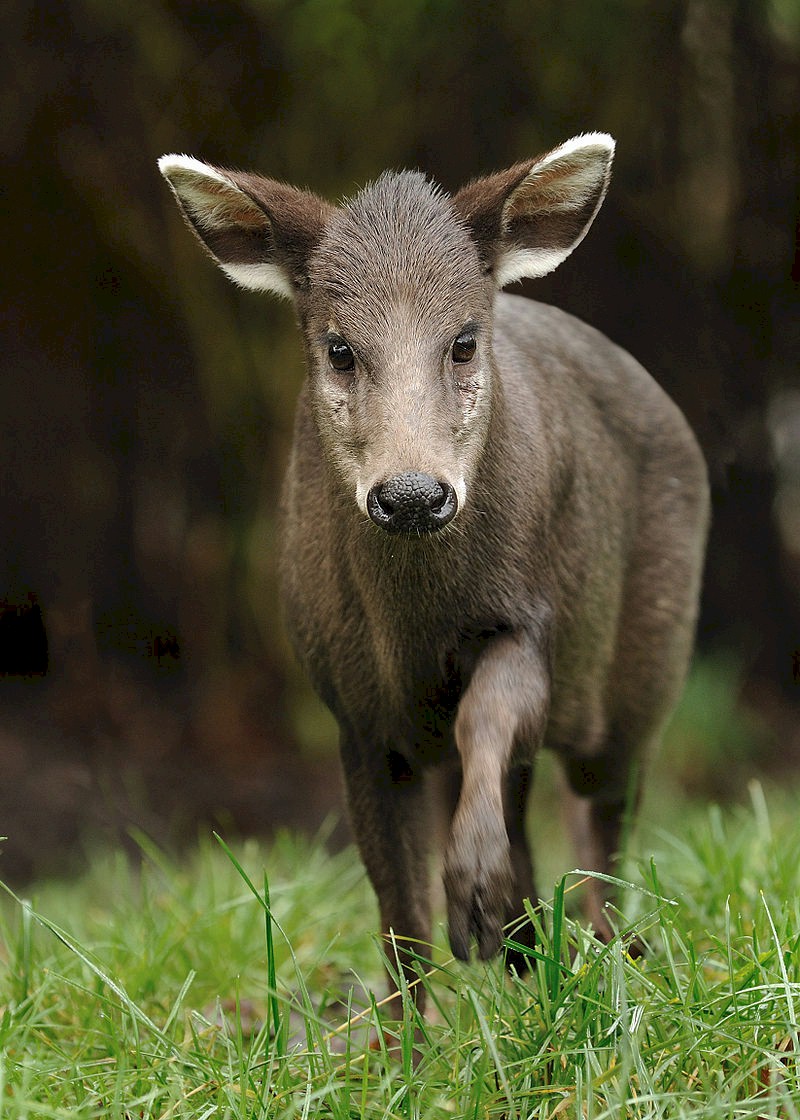
|
The Tufted Deer (Elaphodus cephalophus) is a species of deer found in central and southeastern China. It is known for its distinctive appearance, with a black tuft of hair on its forehead and large, fang-like canine teeth.
>br>
The Tufted Deer is a small species, standing about 2 feet tall at the shoulder and weighing up to 60 pounds. It has a brown coat with white spots and short, spike-like antlers in males.
>br>
These deer are prim
...
|
|
 White-lipped White-lipped
|
|
|
The White-lipped deer (Cervus albirostris) is a species of deer native to Southeast Asia, including countries such as Bhutan, China, India, Laos, Myanmar, Nepal, Thailand, and Vietnam.
The White-lipped deer is a medium-sized deer, standing about 4 feet tall at the shoulder and weighing up to 220 pounds. It has a reddish-brown coat with white spots and a distinctive white ring around its muzzle. The males have large, branching antlers.
...
|
|
 White-tailed White-tailed
|
|
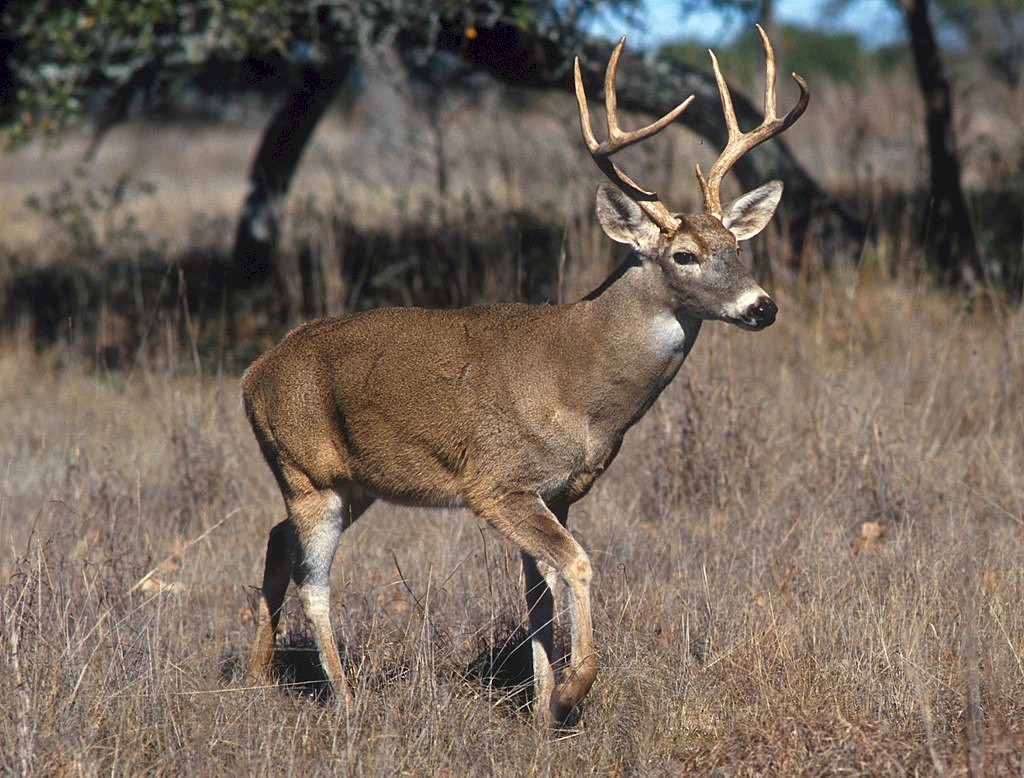
|
The White-tailed Deer (Odocoileus virginianus) is a species of deer native to North America, including the United States, Canada, and Mexico. It is one of the most widely distributed and abundant large mammals in North America.
The White-tailed deer is a medium-sized deer, standing about 3-4 feet tall at the shoulder and weighing up to 220 pounds. It has a reddish-brown coat with white underparts and a distinctive white tail that is ra
...
|
